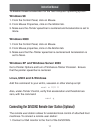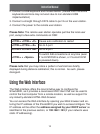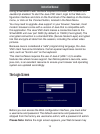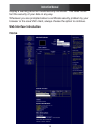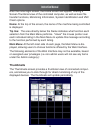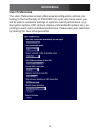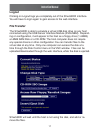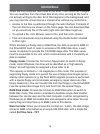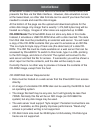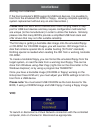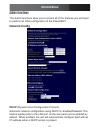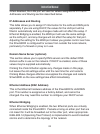
Instruction Manual
19
SVxx53DXI is able to read most MS-DOS/Windows formatted disks and
presents the files via the Web interface. However, disk emulation occurs
at the lowest level, so other disk formats can be used if you have the tools
needed to create and read the disk images.
At the bottom of the page are the upload and download options for the
entire disk image. Any image that is exactly 1,474,560 bytes long will be
treated as a floppy. Images of other sizes are supported up to 8MB.
CD-ROM Mode:The SVxx53DXI does not store any data in this mode.
Instead, it emulates a USB CD-ROM drive with a disk inserted. The data
from that disk must be provided by an external web server. You will need
a copy of the CD-ROM contents that you want to emulate as an ISO file.
This is a byte-for-byte copy of track one (the data track) of a data CD-
ROM. The ISO file must be made available on a web server that can be
accessed by SVxx53DXI. To switch to this mode, type in a URL pointing
to the ISO image, and click on Commit. The system will connect to the
web server and test the file for access. If successful, you will be shown a
short report on the file contents, and the disk will be ready to use.
Currently there is no other way to preview or browse the contents of the
CD-ROM image, except from the host.
CD-ROM Web Server Requirements:
Data must be hosted on a web server that the SVxx53DXI can access •
directly.
An image of a bootable CD-ROM disk can be used by the BIOS to boot •
an operating system.
The image file itself may be any size, but it will typically be less than •
700Mb. Normally this file will be an ISO image (an ISO-9660 file
system) but any disk image may be used.
The web server must support “byte ranges”. Persistent connections are •
used, if available, as this greatly improves performance. “Read-only”
access is provided; writing is not supported.
CD-Rom block size must be 2048 bytes. Unfortunately, XA-Data type •
tracks are not supported.



